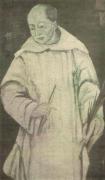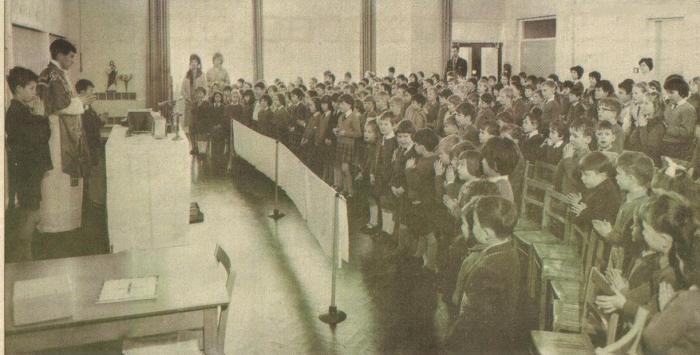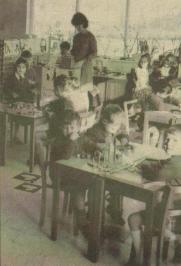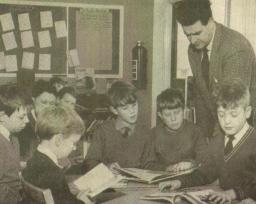The St Augustine Webster School (as it is called today) was officially opened on 3rd May 1967 by the Bishop of Nottingham, the Right Reverend Edward Ellis.
The school was originally named Blessed Augustine Webster Primary after the 16th Century Prior of Melwood in the Isle of Axholme.
It was three years after the official opening of the school that Augustine Webster became a saint as one of the 40 Martyrs of England and Wales. This group of men and women – all executed for treason or related offences between 1535 and 1679 – were declared Christian martyrs by the Catholic Church on October 25th 1970, by Pope Paul VI.
Augustine Webster was hung, drawn and quartered at Tyburn in 1535 after refusing to accept the king as Supreme Head of The Church of England.
Although the school bearing his name was officially blessed and opened on 3rd May 1967 it had already been up and running for the 12 months prior.
The Bishop of Nottingham was welcomed by the Rev Andrew Murdock, chair of the school managers.
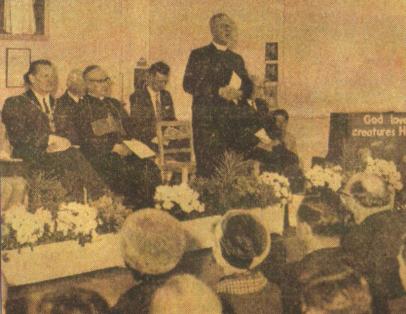
The Bishop King of Nottingham (seated) whilst Rev AR Murdoch addresses the congregation on 3rd may 1967
Alderman Edwin Pittwood, chairman of the Scunthorpe Borough Council’s Education Committee, also spoke at the ceremony along with Thomas Sarsfield and Marysia Gorne.
Dr Anthony Gill represented Lindsey County Council, while Hugh O’Hara was also there from Scunthorpe Borough Council.
Other school managers, the Rev JP McGillycuddy and Dr Kevin McGuane, joined headmaster Philip Ibbotson at the launch.
Addressing the congregation The Bishop said, “The existence and purpose of Roman Catholic schools is sometimes not fully appreciated.”
The school had cost £75,000 and low grants meant the responsibility of paying for such facilities lay on the shoulders of the parishioners who would need to fined around £5,000 a year.
The Bishop said, “There are those who say Roman Catholic schools create a kind of ghetto, mentally inclined to cut off our people from the mainstream of national life.
“Many active laymen and women, whether they are trade unionists, politicians or professional people, have gone through our schools.
“We turn out good citizens; we teach them to be honest, decent, kind and co-operative.
“We are a stream of national life and we have certain values which some may not esteem as we do.”
He referred to the movement within Parliament against schools being established on a religious basis, whether Roman Catholic, Anglican or non-conformist.
“Watch this carefully and stand out against it,” he warned, “they will abolish all respect for God.”
The school was built to accommodate the increasing number of catholic children in the area. St Bernadette’s RC Primary School, Ashby, which was built in 1954, had become overcrowded some years previously.
The Blessed Augustine Webster School, in Baildon Road, was planned for 600 pupils, aged five to 11.
The first phase involved eight classrooms; the second phase, the opening ceremony heard, “will involve the addition of 6 more, to be built as soon as possible.”
The school was designed by Messrs Reynolds and Scott, and project architects were D Frost and WB Widdowson. It was built by Frank Smith & Son whose clerk of the works was Mr AM Shiel.
The school also had a large hall/dining area with adjacent kitchen, plus office and staff accommodation.
After the opening ceremony, at which pupils performed two songs, the school was open for inspection by VIP’s and guests.
In 1992 the school celebrated its silver jubilee under headship of Bill Egan where a Mass of Thanksgiving was offered by the Bishop of Nottingham, James McGuinness.
As part of the celebrations each pupil was presented with a silver jubilee prayer book, inscribed with his or her name. Former pupil Danny Flynn, who became a renowned artist working in the field of science fiction/fantasy and natural history, designed the front cover.
